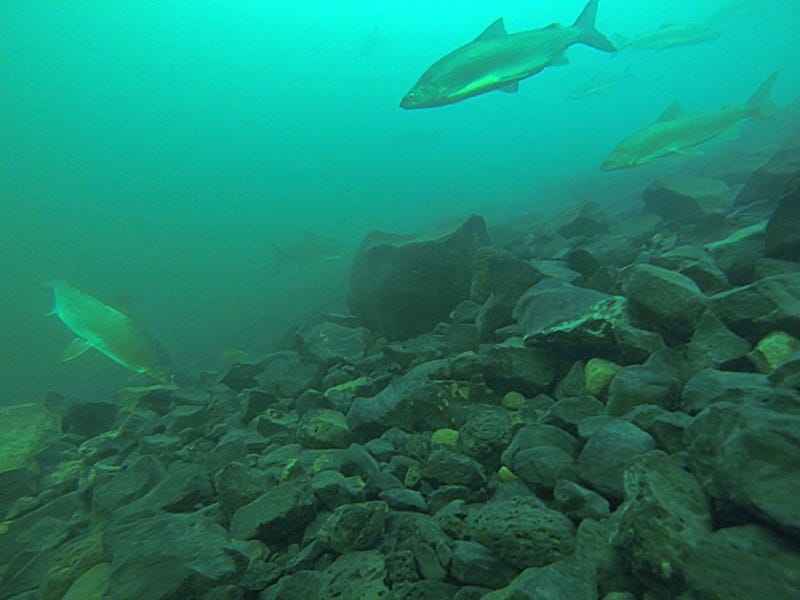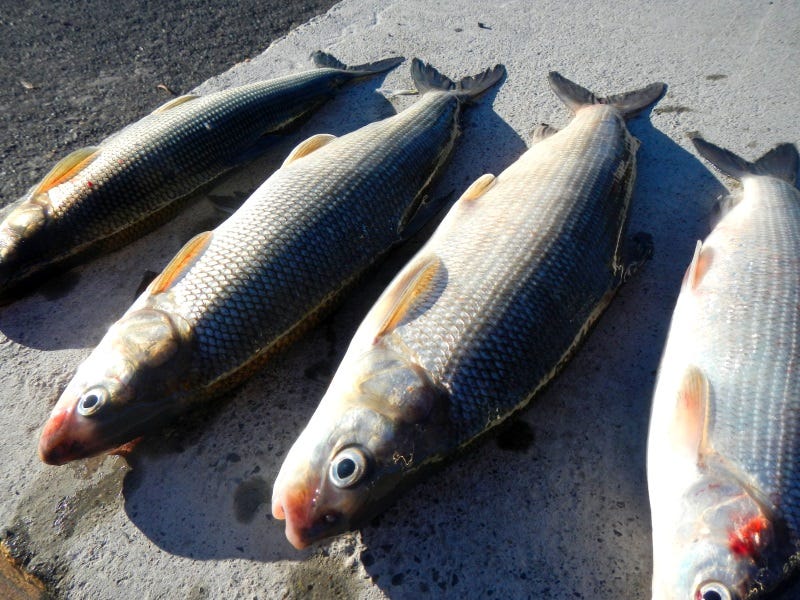Winter Whitefish Tactics for The Inland Northwest


Because there were so many fish underneath the boat, the fish-finder couldn’t differentiate between that mass and actual bottom, some 60 feet below.
This didn’t arrive as a major surprise—when whitefish arrive on their spawning grounds, they arrive en masse. In fact, in many Inland Northwest lakes, whitefish are the dominant fish when measured in simple biomass. If you want in on the action, you can target these fish on many lakes spread through Washington, Idaho and Montana starting in December and extending to March. The major exception to this rule is Montana’s Flathead Lake where a thriving summer fishery takes place.
Through their native Great Lakes range, whitefish are revered for their delicate, clean white meat. But, in the West, this tasty fish is often regarded as trash. That reputation, however, is undeserved because these western whitefish are equally good eating, meaning they are delicious when breaded and fried, smoked, canned, baked and even pickled. Bonus: They are easy to catch and an absolute blast to fight.
For those reasons, you may discover that attitudes toward this species are slowly changing. And, with generous catch limits that should arrive as no surprise.
If stocking the freezer with some great tasting fish sounds good to you, you’ll want to get after them soon. Starting in early December, lake whitefish begin to gather on the spawning grounds. These locations are typically located in bays or near water inlets that provide suitable spawning substrate. In Idaho’s Lake Pend Oreille these areas include Bottle Bay, Garfield Bay, and the flats associated with the Sunnyside Peninsula. In Washington, Lake Roosevelt’s Spokane Arm supports good numbers of whitefish, and the inlets on the north end of Banks and Soda lakes provide excellent fishing for boat and bank-bound anglers.
Want to read more about fish finders?

When fishing from a boat, use your electronics to locate schools of whitefish in 30-to 60 feet of water and anchor. Jigging is by far the most popular technique for lake whitefish. If you try it, you’ll see why. When doing so, use small jigging spoons, such as “forage minnows” from Northland Tackle, or Swedish Pimples tipped with a nightcrawler, salmon eggs, or a smaller worm. In addition, try small marabou or plastic crappie jigs, which are immensely popular on Washington’s lakes. When doing so, drop your jig or spoon to the bottom, and make short, sharp jigging motions with periodic moments of inaction. The bite usually arrives when the lure is motionless. If you feel any resistance, set the hook.
Whether fishing from a boat or the bank you can also try a Carolina rig, with a size 12 or 14 red hook tipped with a single Powerbaat maggot. Once you cast or drop the offering under or behind the boat, simply let the bait rest on bottom until you detect a bite. A small hook allows these small-mouthed fish to take the whole bait in and ensures a solid hookset.

Any six-to seven-foot long medium or medium-light action bass or trout rod works well for whitefish. Lake whitefish, however, are subtle biters. To make sure you detect bites, spool your reel with eight-to 15-pound braid. A two-to three-foot section of eight-pound monofilament or fluorocarbon leader is enough to fight these fish.
Winter can be long in the Inland Northwest. If you are looking for an excuse to get outside and on the water during the coldest months, consider adding lake whitefish to your list of reasons. Even in cold temperatures, these fish bite—you can even get them while fishing through the ice, which is just as much fun and rewarding as pursuing them in open water. Stop by your local North 40 Outfitters and we’ll get you geared up for these whitefish.
Check out our selection of fishing rods, and get out there today.
